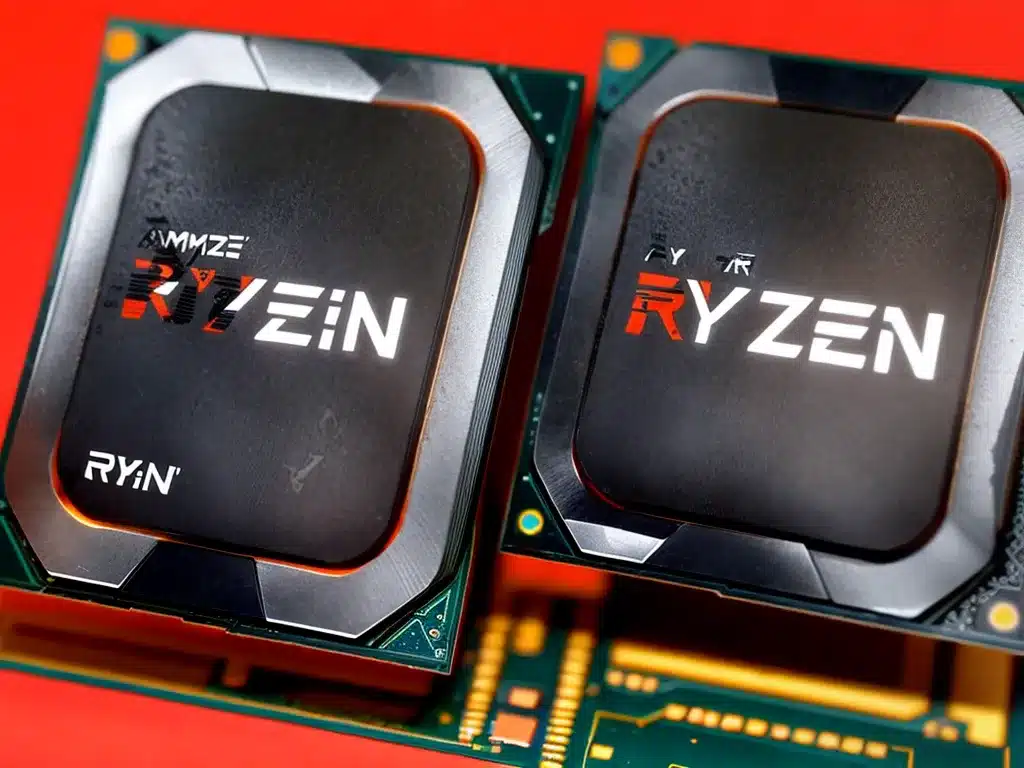Introduction
AMD’s upcoming Ryzen 7000 series desktop processors, codenamed “Raphael”, will be built on an enhanced 5nm process node from TSMC and are expected to offer significant performance and efficiency improvements over the current Zen 3 architecture. The new Zen 4 chips will bring several key changes, including:
A Brand New 5nm Process Node
- AMD is moving to TSMC’s cutting-edge N5 process node for Zen 4, enabling higher transistor density versus the 7nm node used for Zen 2 and Zen 3.
- The enhanced 5nm process will allow AMD to drive higher clock speeds or pack in more cores at the same power levels.
- Early reports suggest the Zen 4 cores could operate upwards of 5 GHz, a significant jump over Zen 3’s max boost around 4.9 GHz.
Increased Core Counts Across the Stack
- AMD is expected to raise core counts with Zen 4, possibly starting from 6 cores for the lowest-end model.
- Flagship parts could go up to 16 cores for consumers, versus max 12 cores on Zen 3.
- More cores will bring enhanced multi-threaded performance in productivity and creator workloads.
Support for DDR5 Memory and PCIe Gen 5
- Zen 4 platforms will introduce support for next-gen DDR5 RAM that offers double the bandwidth of DDR4.
- PCIe Gen 5.0 support will also double interface bandwidth for storage and graphics.
- Faster DDR5 and PCIe Gen 5 will reduce bottlenecks for gaming and bandwidth-hungry applications.
Revised Chiplet and Core Design
- AMD is expected to revise the Zen 4 core layout, possibly using a single chiplet design instead of the complex multi-chiplet arrangement on Zen 3.
- The cores are rumored to be substantially redesigned as well for higher single-threaded performance.
Expected Features and Specifications
Here are the key expected features and specifications for AMD’s upcoming Ryzen 7000 Zen 4 processors based on current leaks and rumors:
Up to 16 Zen 4 Cores With SMT Support
- Top models expected to max out at 16 cores and 32 threads, like the Ryzen 9 5950X today.
- SMT (Simultaneous Multi-Threading) will remain enabled to execute two threads per core for improved efficiency.
Boost Clock Speeds Over 5 GHz
- Higher 5nm process node clocks anticipating boost frequencies above 5 GHz for premium models, well above Zen 3’s max 4.9 GHz.
- Increased clocks to drive strong single-threaded performance gains in gaming and lightly-threaded workloads.
170W TDP for High-End Parts
- Flagship CPUs rumored to support a TDP up to 170W, versus max 105W on Zen 3.
- The increased TDP headroom will allow more aggressive boosting behavior.
- High-end parts may require beefy cooling solutions to handle the 170W power output.
DDR5-5200 Memory Support
- First Ryzen CPUs with native DDR5 memory interface, supporting speeds up to DDR5-5200.
- DDR5 delivers much higher bandwidth and efficiency versus DDR4.
- But DDR5 will carry a price premium when first launched.
PCIe Gen 5.0 Interface
- Up to 24 lanes of PCIe Gen 5 support from the CPU for storage and graphics.
- Doubles interface bandwidth from PCIe Gen 4 for reduced bottlenecks.
Expected Performance Uplift Over Zen 3
Based on early leaks and rumors, here is the expected performance improvement with Zen 4 versus the current Zen 3 architecture:
Up to +25% Higher Multi-Threaded Performance
- Increased core counts and clocks expected to deliver up to 25% higher multi-threaded output in productivity workloads.
- Will extend Zen 3’s lead in heavily multi-threaded rendering, code compilation etc.
Up to +15% Better Single-Threaded Speed
- Major focus on improving single-thread speed, with +15% gains likely from higher clocks.
- Will boost Zen 4’s competitiveness with Intel’s Raptor Lake in gaming and light workloads.
DDR5 and PCIe Gen 5 Remove Bottlenecks
- DDR5 and PCIe Gen 5 mitigate memory and storage/graphics bottlenecks.
- Much higher bandwidth improves experience in memory-sensitive games and professional workflows.
Competitive Positioning Against Intel 13th Gen Raptor Lake
AMD’s Zen 4 will go head-to-head with Intel’s upcoming 13th Gen Core “Raptor Lake” CPUs, likely leading to a fierce battle for the desktop performance crown:
Near Parity in Multi-Threading Expected
- Raptor Lake should roughly match Zen 4 cores and clocks.
- Expect both to offer similar multi-thread throughput in rendering, editing etc.
Gaming Crown Still Up For Grabs
- Zen 4 boosts single-thread speed, but Raptor Lake will compete strongly.
- The gaming performance lead could go either way.
Platform Support May Be Differentiating Factor
- AMD has unified AM5 platform with DDR5 and PCIe 5 support.
- But Intel still splits platforms between DDR4 and DDR5 models.
- AMD may have advantage in platform longevity and upgradeability.
Initial Thoughts and Analysis
On paper, Zen 4 appears extremely promising and could catapult AMD to undisputed leadership across desktop applications:
- The shift to 5nm enables significant single-threaded and multi-threaded gains.
- Support for next-gen memory and I/O removes bottlenecks.
- Competitive outlook against Raptor Lake for gaming and productivity workloads.
- Long-term platform support with AM5, DDR5 and PCIe Gen 5.
But the actual real-world performance, pricing, and platform compatibility will determine if Zen 4 can deliver on its lofty expectations. As AMD’s most advanced and scalable architecture yet, the stage is set for Zen 4 to push desktop CPU performance to new heights. It could be a watershed moment for AMD to take the undisputed lead in the desktop performance race. We will know for sure once independent benchmarks are available later in 2022.













